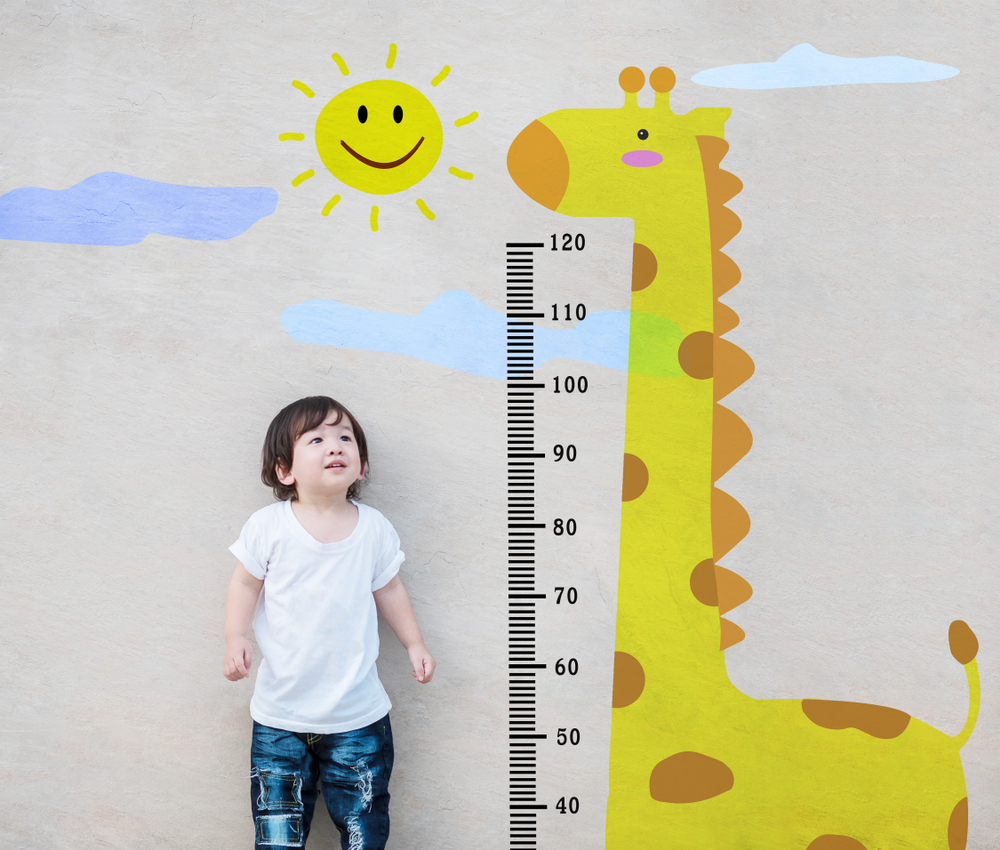Understanding measurements Measurement Worksheets for Ages 4-9
22 filtered results
-
From - To
Our "Understanding Measurements: Measurement Worksheets for Ages 4-9" page offers an array of interactive worksheets designed to help young learners grasp key measurement concepts. These fun, educational worksheets cover everything from length and width to volume and weight, engaging kids' natural curiosity and promoting foundational math skills. Crafted by educational experts, these printable activities cater to varying skill levels, ensuring that children aged 4-9 are able to learn at their own pace. Perfect for home or classroom use, our worksheets make learning measurements enjoyable and accessible, fostering confidence and proficiency in young mathematicians.
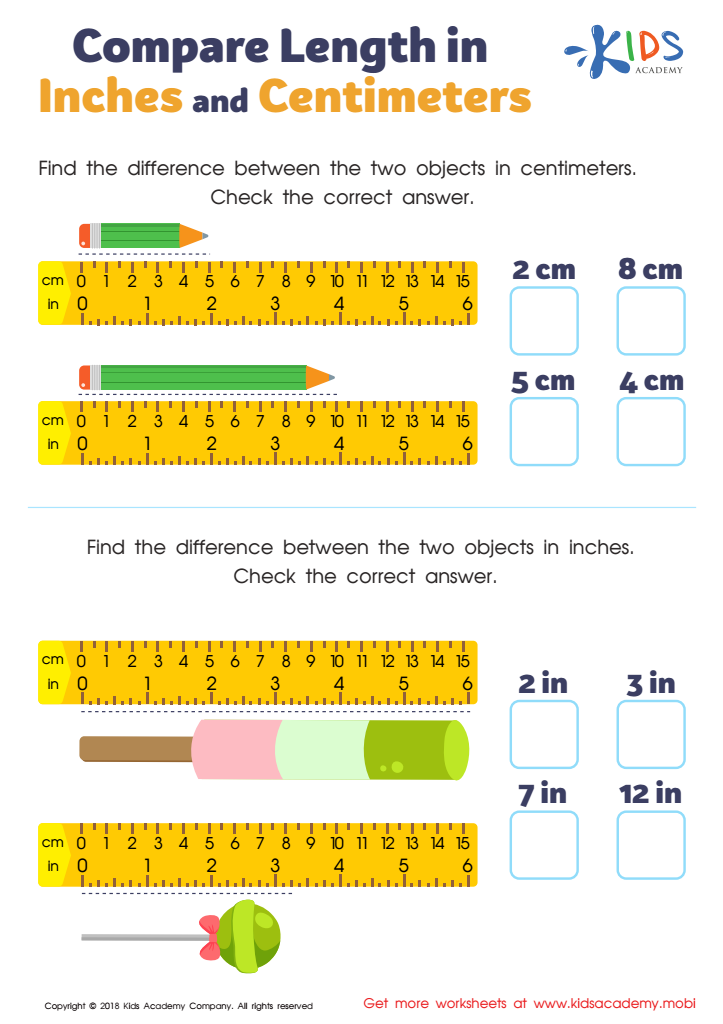

Compare Length in Inches and Centimeters Worksheet
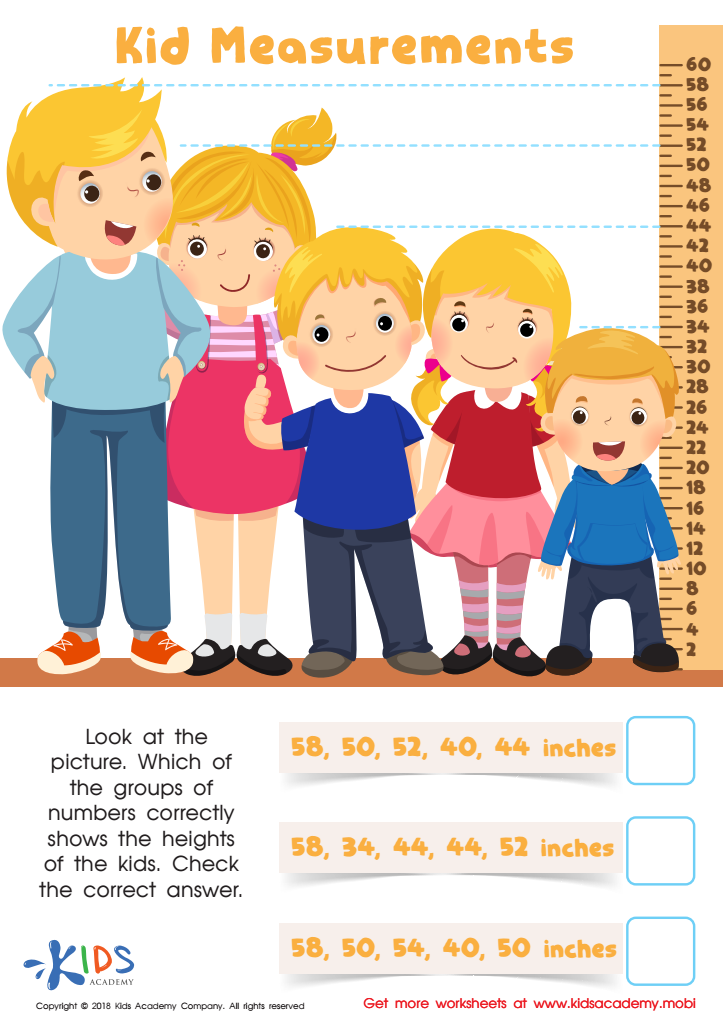

Kids Measurements Worksheet
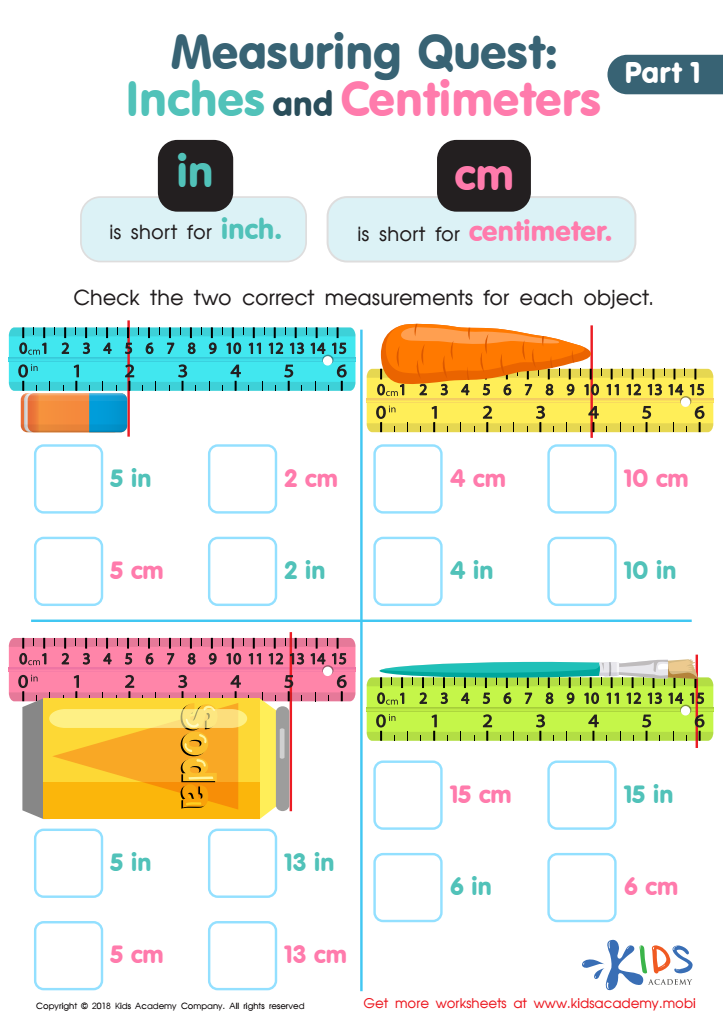

Measuring Quest: Inches and Centimeters Worksheet
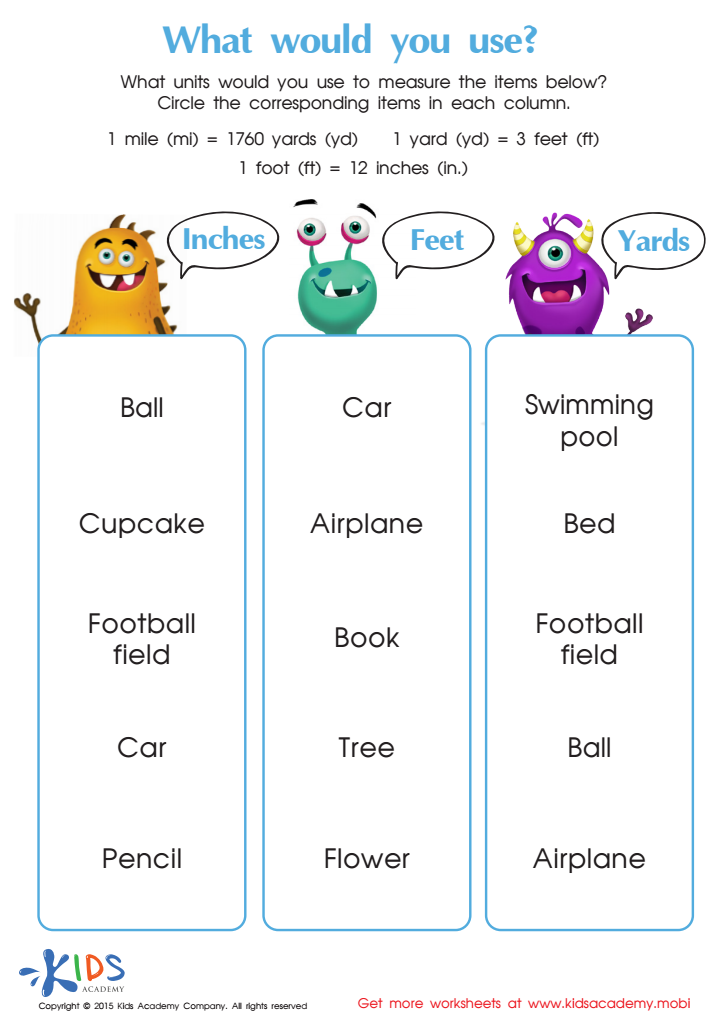

Learning about measuring objects in inches, feet and yards Worksheet
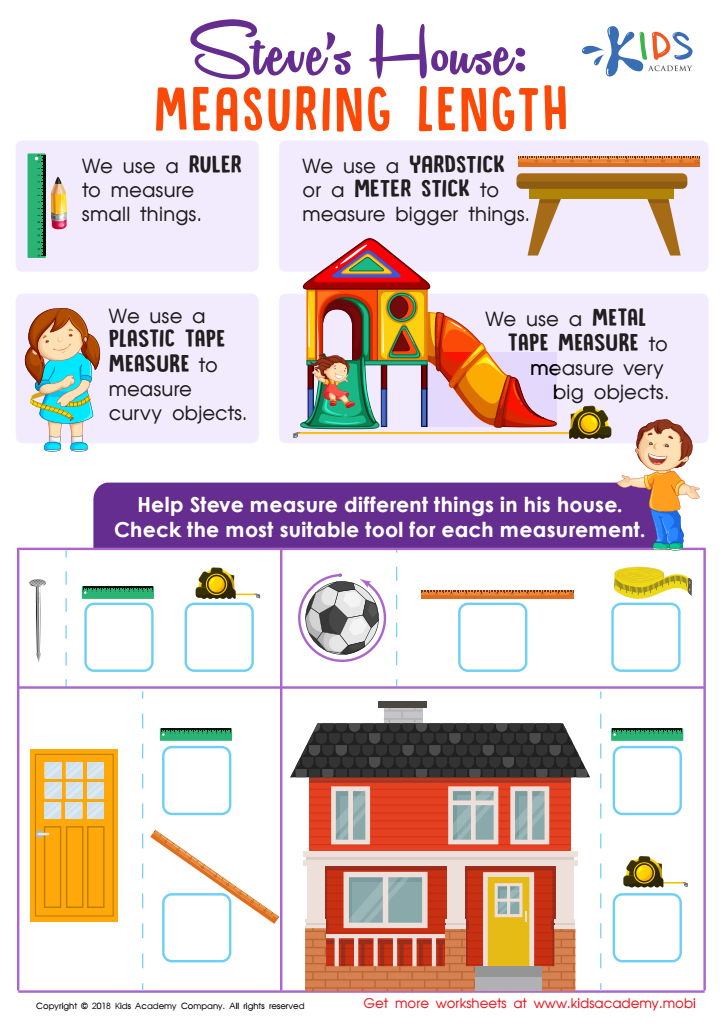

Steve's House: Measuring Length Worksheet
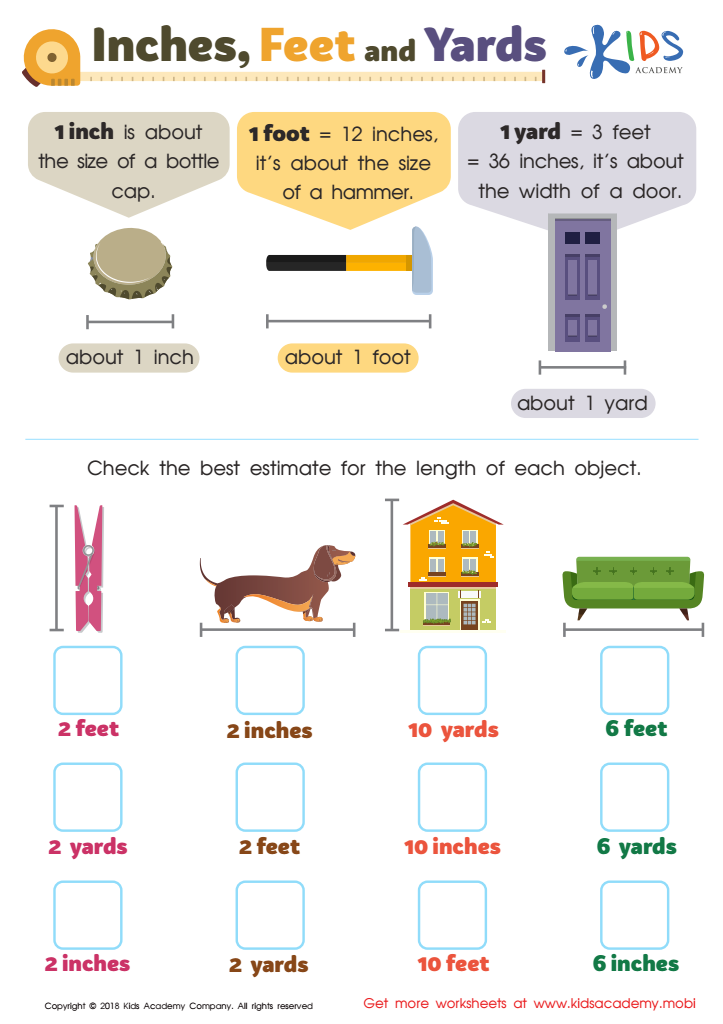

Inches, Feet and Yards Worksheet
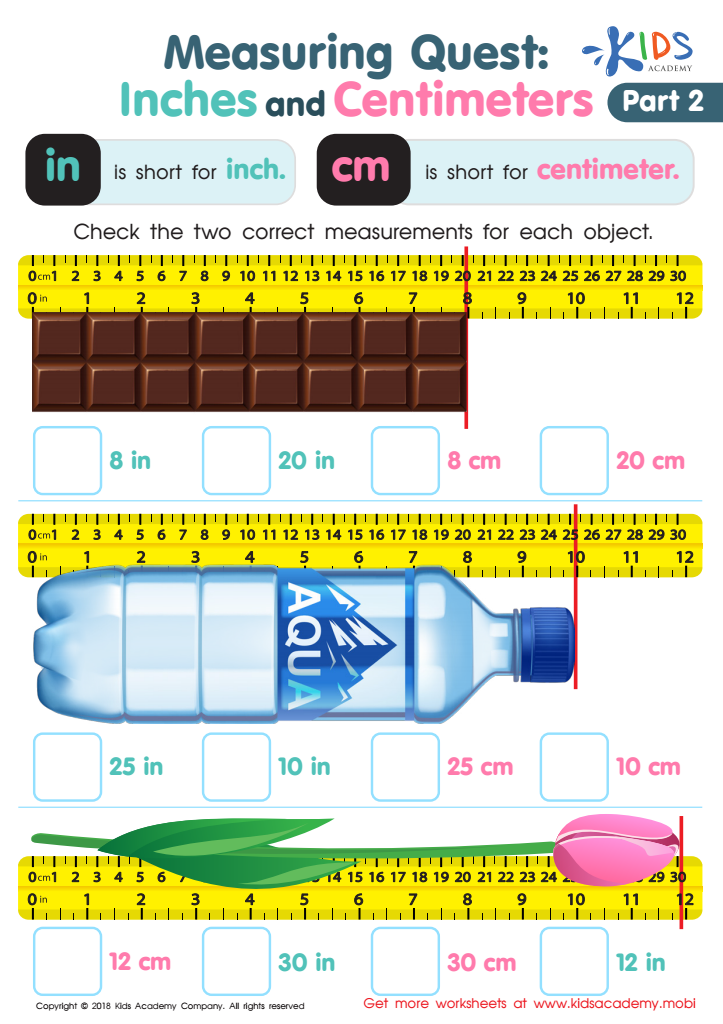

Measuring Quest: Inches and Centimeters - Part 2 Worksheet
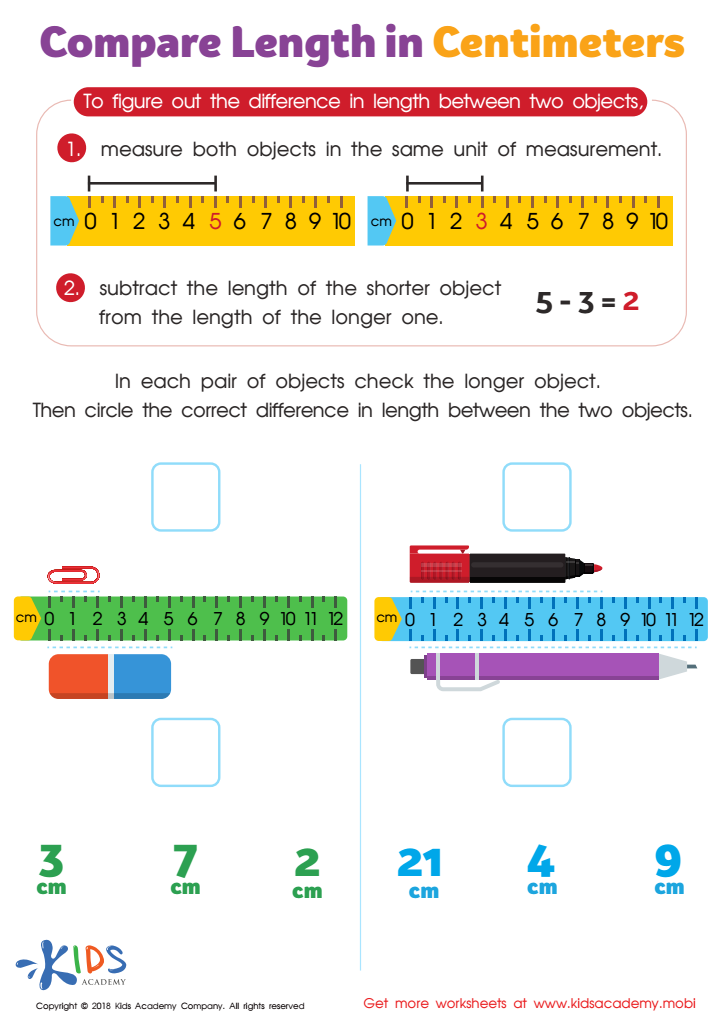

Compare Length in Centimeters Worksheet
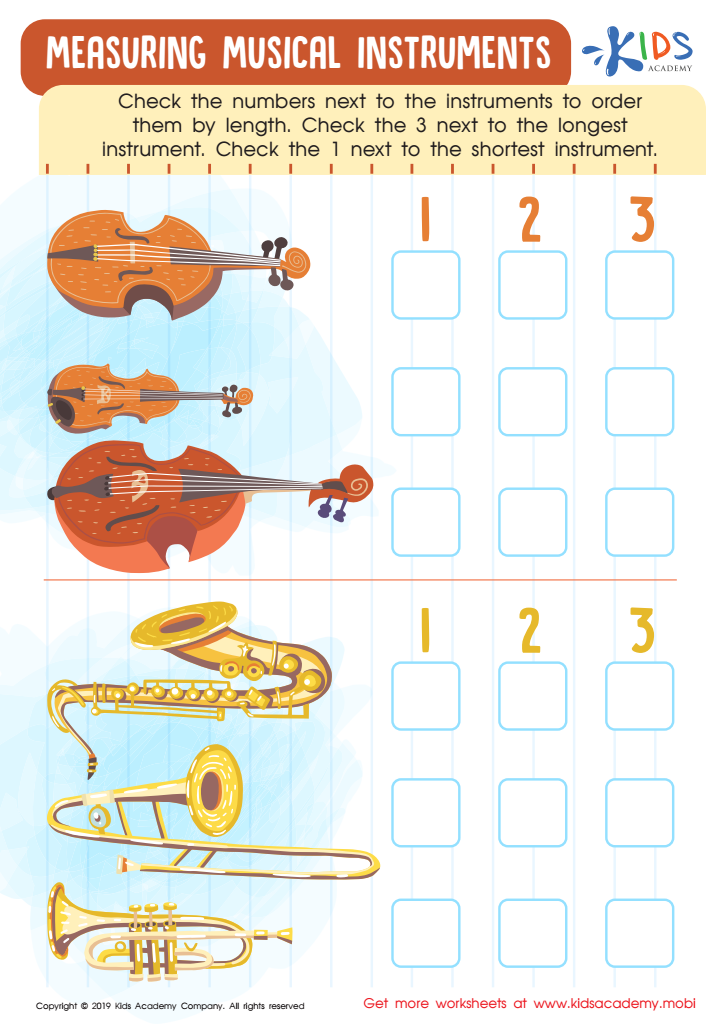

Measuring Musical Instruments Worksheet
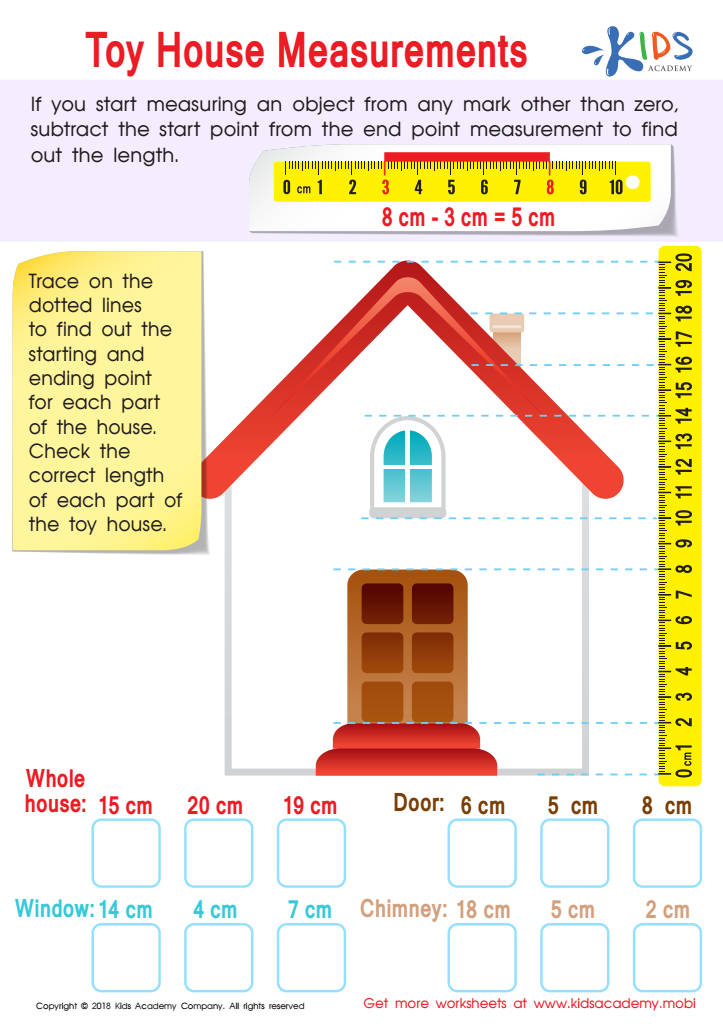

Toy House Measurements Worksheet


Zoo Height Contest Worksheet
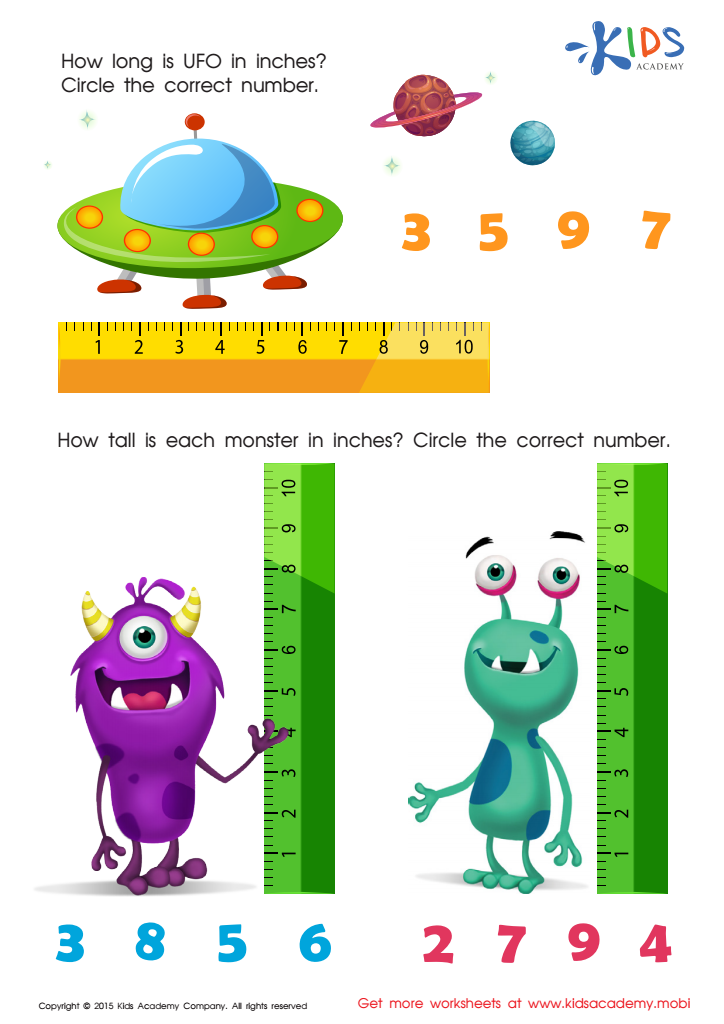

Measuring in Inches Worksheet


Learning About Measuring In Inches Printable
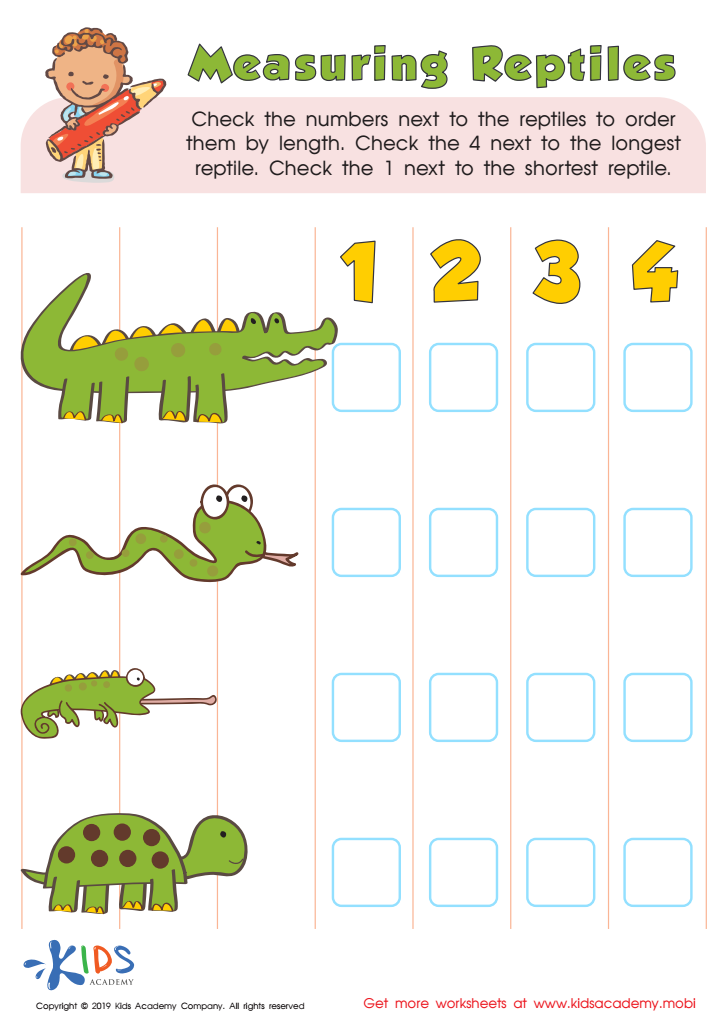

Measuring Reptiles Worksheet
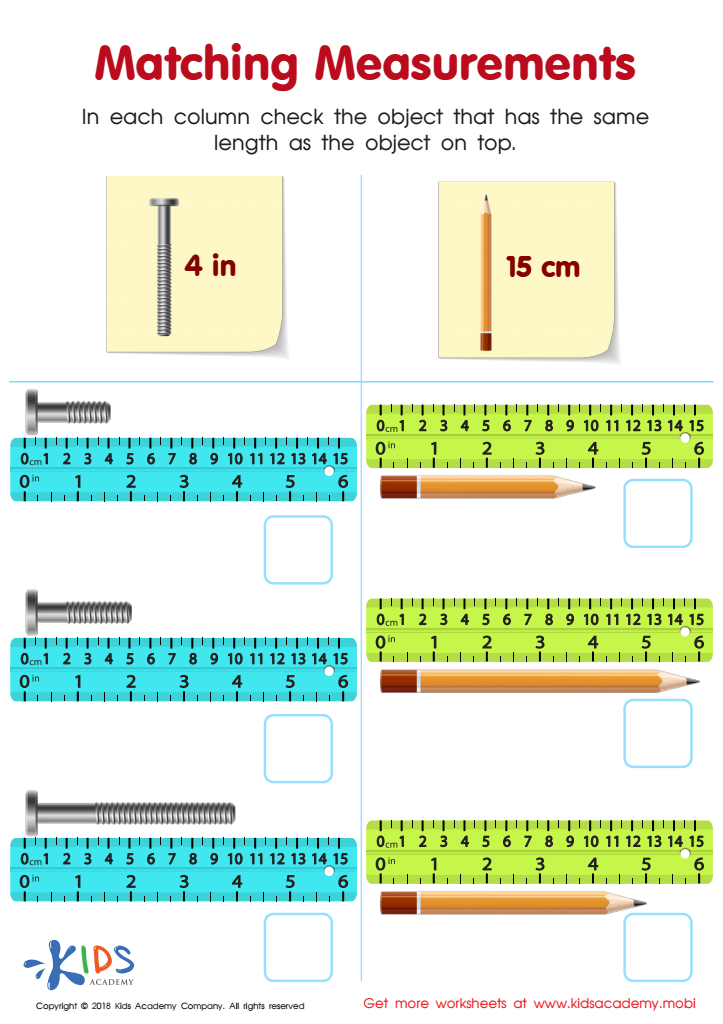

Matching Measurements Worksheet
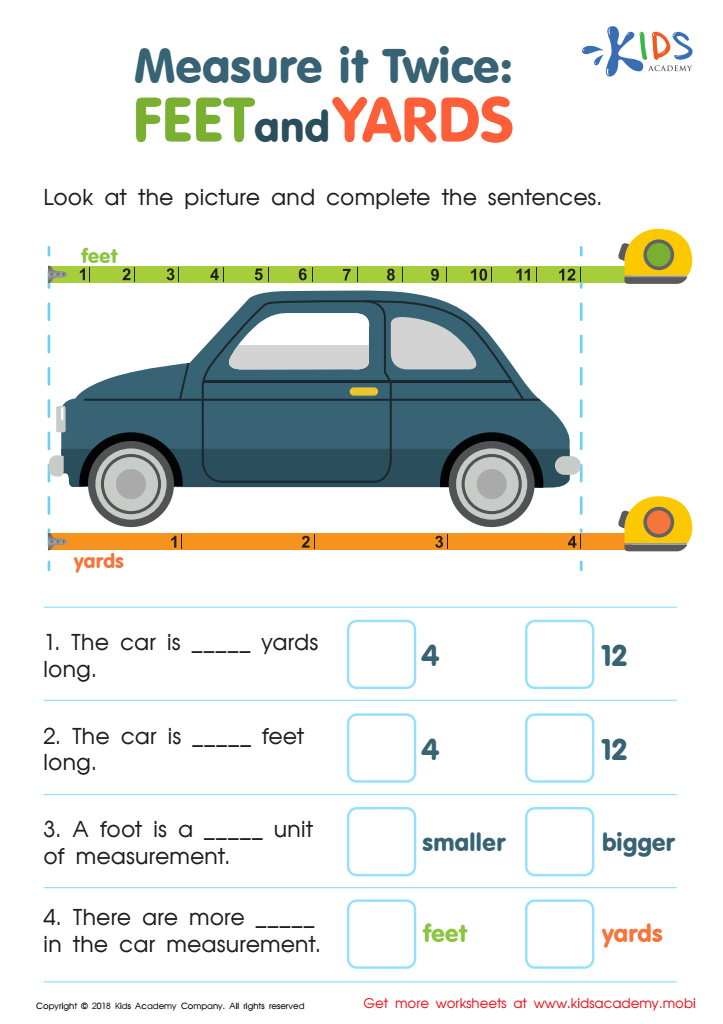

Measure It Twice: Feet and Yards Worksheet
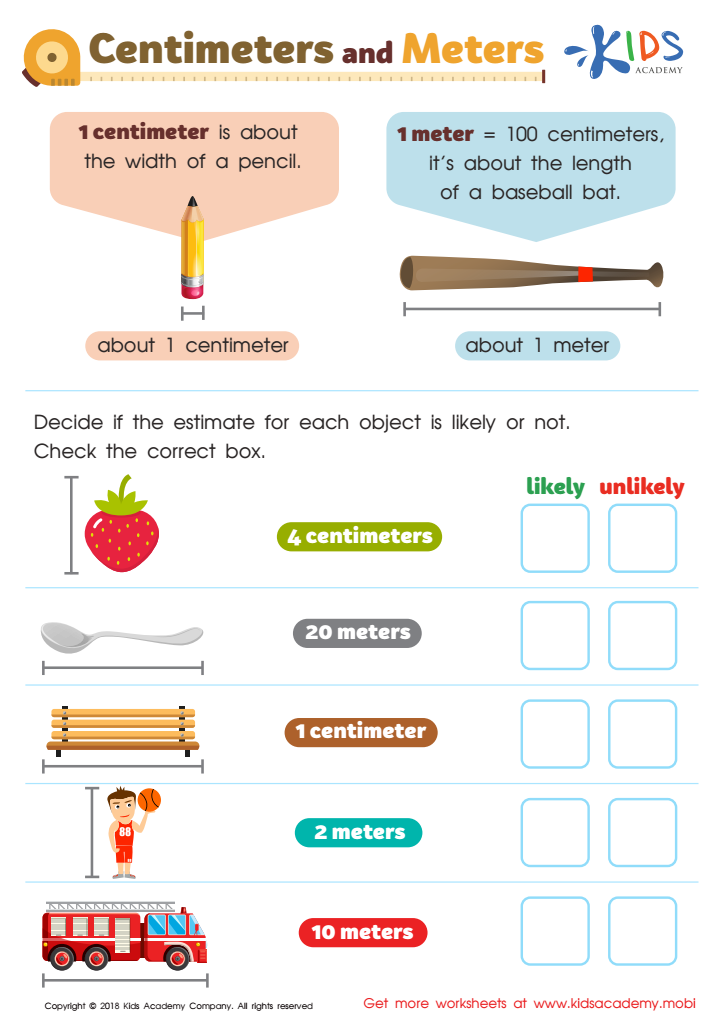

Centimeters and Meters Worksheet


Measuring with Blocks Worksheet


Let's Measure Animals! Worksheet
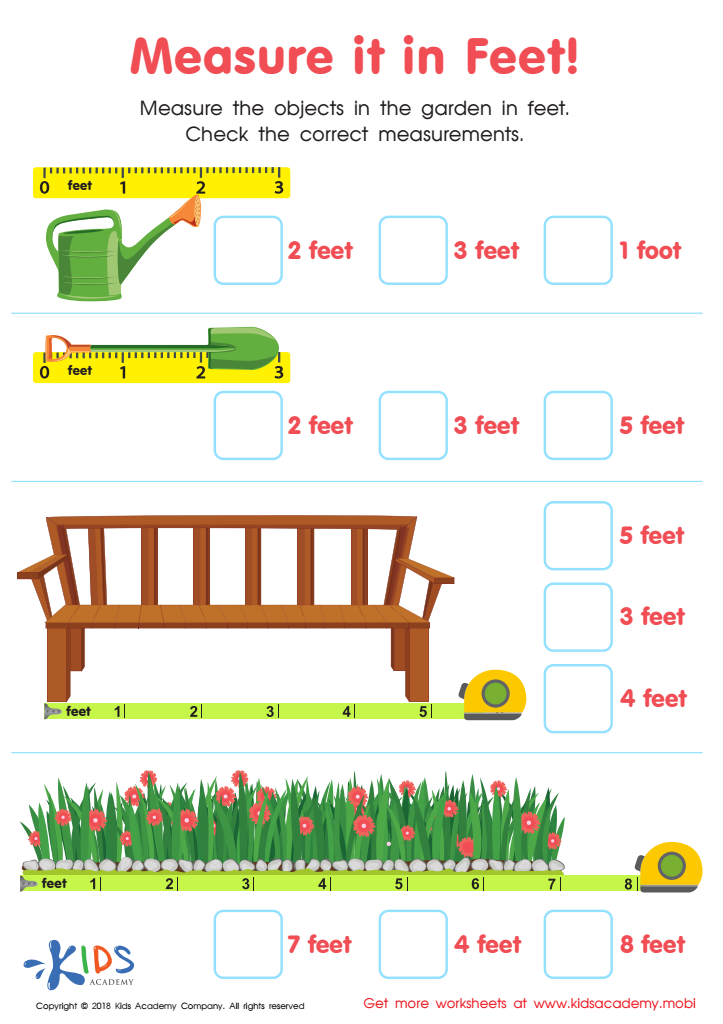

Measure it in Feet Worksheet
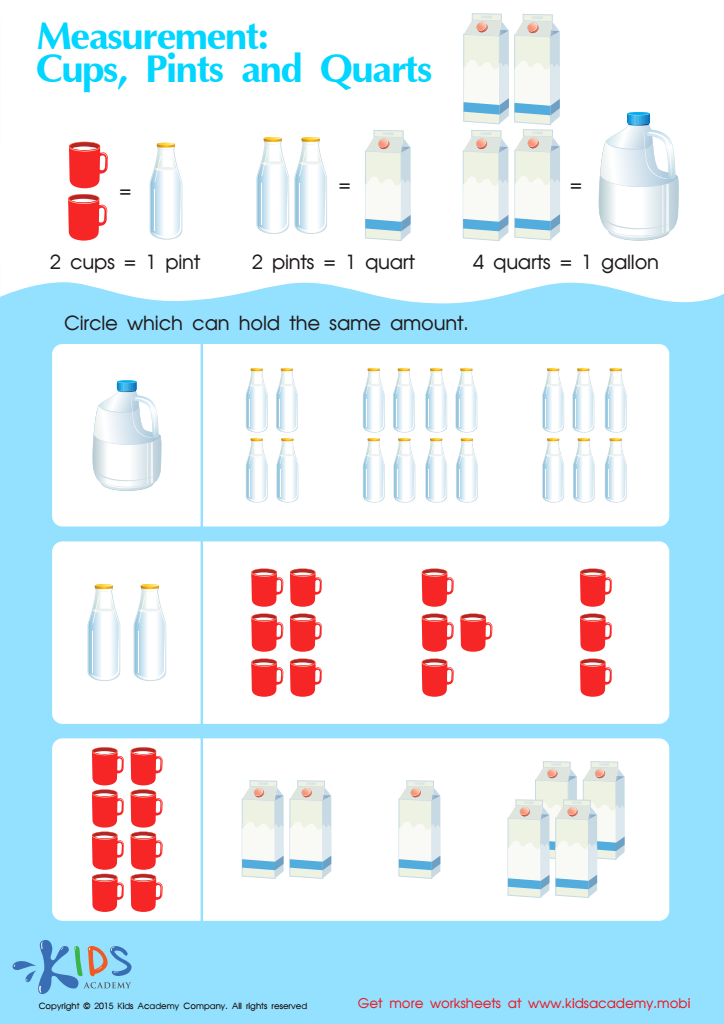

Cups, Pints and Quarts 2 Worksheet
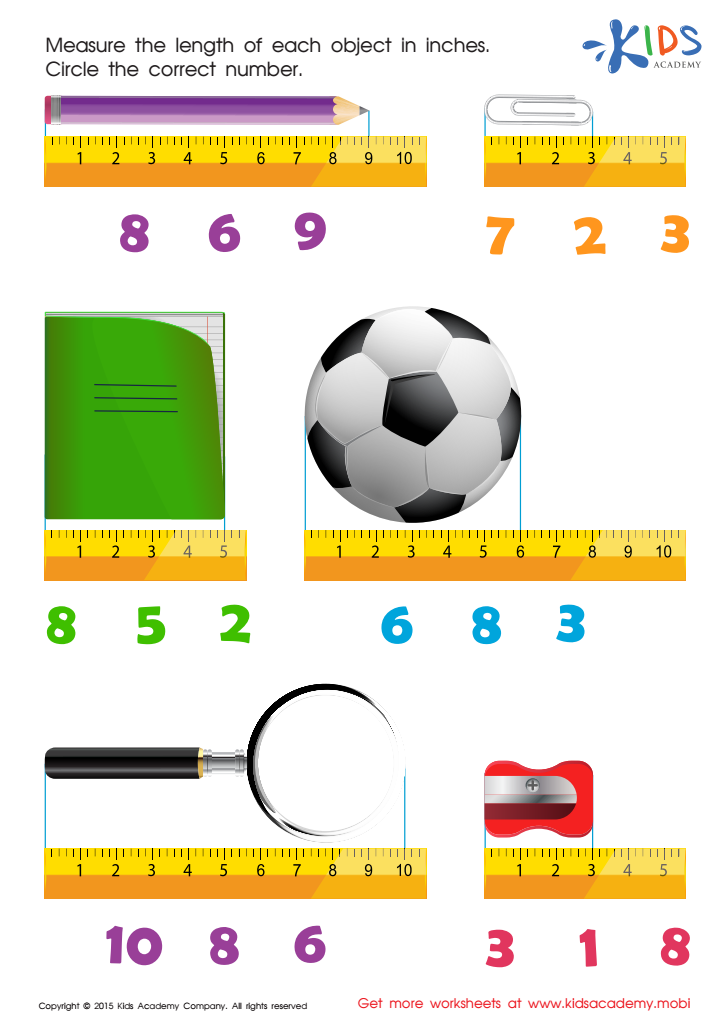

Learning measuring objects in inches Worksheet
Understanding measurements is a fundamental skill that forms the basis for numerous life tasks and educational subjects. For children aged 4-9, learning measurements can significantly enhance their cognitive development, analytical thinking, and problem-solving abilities.
Firstly, introducing measurement concepts early helps kids grasp other critical arithmetic and scientific principles. It's foundational for understanding geometry, algebra, and even more complex sciences later. Kids encounter measurement daily, from filling a cup with water to setting a timer for a game. Offering direct experiences with real-world applications piques their curiosity and contextualizes their learning.
Moreover, measurements foster precision and critical thinking. It teaches children to observe, compare, estimate, and analyze their environment. Understanding “how much” or “how many” improves their descriptive capabilities, allowing them to communicate more effectively.
Measurements also link directly to life skills. Children learn about time, weight, volume, and length—essential metrics for cooking, traveling, budgeting, and planning. Familiarity with these units from a young age can translate to self-reliance and better decision-making later in life.
Parents and teachers who emphasize the significance of measurements help scaffold children's academic journey and real-world competence, turning abstract numbers into tangible understandings. Ultimately, this robust foundational insight prepares young learners for the challenges they’ll face both inside and outside the classroom.
 Assign to My Students
Assign to My Students










